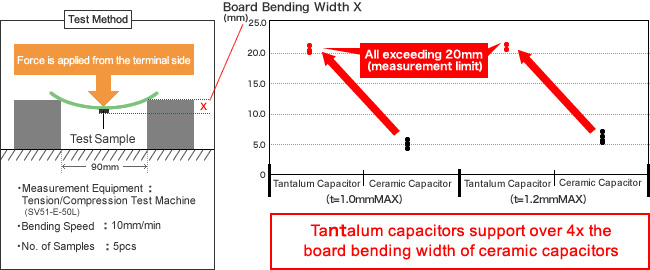Bias voltage is identical save for the lower voltage one having its graph truncated at its rated voltage.
Electrolytic versus ceramic frequency response.
A solid liquid or gel electrolyte covers the surface of this oxide layer serving as the cathode or negative plate of the capacitor.
This is also why ceramic capacitors from 100nf 1uf are commonly used as ic decouplers an electrolytic cannot beat a small ceramic can because of its.
This is part of the reason why you see a lot of ceramic capacitors used in high frequency dc dc converters electrolytics simply aren t that good up in the hundreds of kilohertz megahertz.
At high frequencies a multilayer ceramic capacitor has low impedance and exhibits excellent frequency characteristics.
The graph of some mlccs capacitance vs.
Today s mlcc can do the whole job.
Capacitance and esr reduce as measuring frequency increases.
The frequency characteristics of a capacitor differ greatly from one type of capacitor to another.
The change of impedance is described in 3 4.
Tantalum ceramic capacitors.
Now one high value mlcc in the same size can be used.
Due to their very thin dielectric oxide layer.
In fact many ceramic capacitors i suspect are the exact same part but with different part numbers the same 4 7µf capacitor being sold as both a 35v and 50v capacitor under different labels.
An electrolytic capacitor is a polarized capacitor whose anode or positive plate is made of a metal that forms an insulating oxide layer through anodization this oxide layer acts as the dielectric of the capacitor.
Even multilayer ceramic capacitors come in a variety of types depending upon the raw materials used and the shape of each.
However the rate of the change is not constant the presumed reasons are as follows.
In the past psus needed two capacitors one high value electrolytic and a lower value mlcc.
However the electrolytic dominates at low frequencies and the 47 nf ceramic dominates at very high frequencies.
Hi farhad thank you for your inquiry about capacitors in the audio path around our sigmadsp parts.
In general there are 3 types of capacitors that will be available in the values that are appropriate as ac coupling in most signal paths.
Figure 3 shows the 22 µf ceramic as the dominant curve for the impedance through most of the frequency band.
In this post we compare tantalum capacitor vs ceramic the differences between and benefits of the two.
Electrolytic tantalum and ceramic.
Tantalum capacitors have superior frequency characteristics and long term stability.
Impedance of ceramic and electrolytic capacitors frequency mhz 0 001 0 01 0 1 1 10 100 1000 100000 10000 1000.
What are impedance esr frequency characteristics in capacitors.
A single mlcc giving better frequency response than the electrolytic mlcc combination provides the required frequency response over a wide frequency band.
Frequency characteristic characteristics of aluminum electrolytic capacitor are also frequency dependant.

